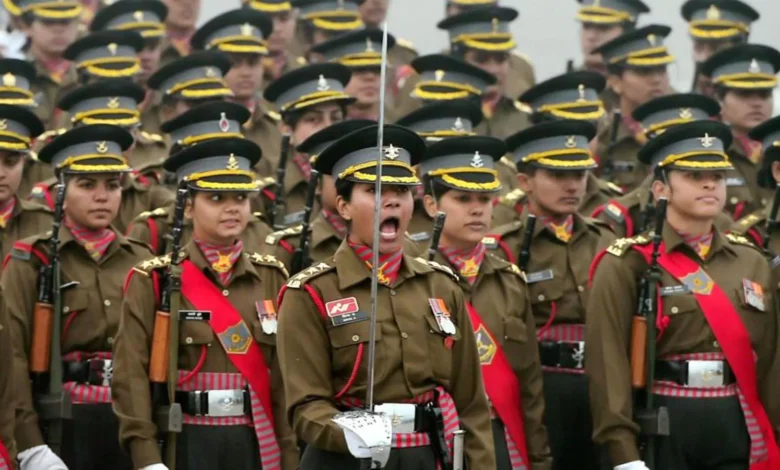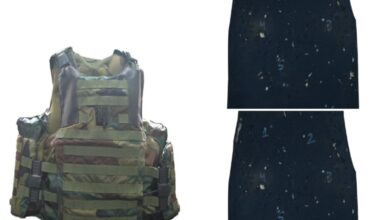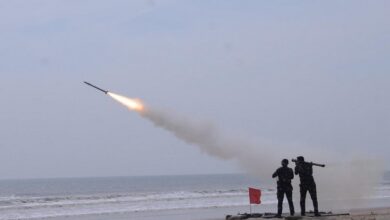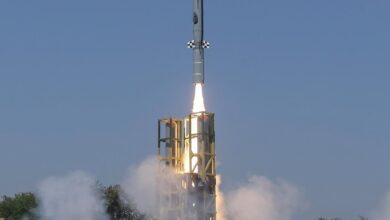Nari Shakti: Modi govt’s push for gender inclusivity in the armed forces
The extension of leave rules will go a long way in dealing with women-specific family and social issues relevant to the armed forces.

Defence Minister Rajnath Singh has accepted a plan that grants soldiers, sailors, and air warriors the same leave entitlements as female officers in the three services, as part of an effort to encourage inclusivity in the armed forces.
The action, which is a component of the government of Narendra Modi’s drive for inclusivity in the armed forces, would enable women in the military better balance their personal and professional life, which will improve their working circumstances. This includes leaves for child adoption, maternity, and childcare.
The Modi administration has been keeping up with the rise in women’s involvement in the security agencies, including the police and paramilitary, while also making sure they are well-rounded. “The extension of leave rules will go a long way in dealing with women-specific family and social issues relevant to the armed forces. This measure is going to improve the work conditions of women in the military and aid them to balance the spheres of professional and family life in a better manner,” the Ministry of Defence stated in a statement.
How the move impacts the circumstances
Currently, women officers are eligible for 180 days of paid maternity leave for each child, up to a maximum of two children. Throughout one’s whole service career, a 360-day childcare leave is awarded (if the child is under 18 years old). Likewise, adoptive mothers who take in a kid younger than a year old are eligible for 180 leaves.
However, as the services began to induct an increasing number of women across ranks below officer (PBOR) cadre for the first time under the Agnipath initiative, uniformity in leaves had remained a problem. The air force and the army are getting ready to recruit women under the programme, but the navy has already started.
Since all female troops are now eligible for the same leave regulations, more women will probably be encouraged to enlist in the military and contribute to India’s security.
According to a ministry statement, “the extension of leave rules will go a long way in dealing with women-specific family and social issues relevant to the armed forces. This measure is going to improve the work conditions of women in the military and aid them to balance the spheres of professional and family life in a better manner,” as reported by News18.
Promoting Women in the Indian Military
This year’s 74th Republic Day parade featured a strong Nari Shakti contingent, led by female officers, including members of the Army’s Daredevil team, the CRPF, the armed forces, and the Akash missile system. The Modi administration has also allowed women to apply to the National Defence Academy.
Following the Centre’s 2018 decision to permit women officers in India’s armed forces to take up permanent commission following a term on the Short Service Commission, 557 women officers have been granted permanent commission in the Army. Five female officers have been promoted to colonel, a position that is typically held by relatively few SSC officers throughout their brief tenure.
83 female jawans were appointed to the Army’s Military Police Corps for the first time. Captain Abhilasha Barak made history as the first Indian woman to fly a combat aircraft while in India.
Women were not allowed to work in front-line combat roles until the Modi government upset the status quo in 2015. The Modi administration also gave its approval in April of this year to the Indian Army’s decision to admit female officers into the Artillery Regiment.
Actions to ensure Equality
In order to equalise opportunities and service conditions across the three branches of the service, a number of steps have been implemented:
Indian Army: In addition to the Armed Forces Medical Services, which is reserved for women, women are currently being commissioned in ten streams within the Indian Army: the Corps of Engineers, the Corps of Signals, the Army Air Defence, the Army Service Corps, the Army Ordnance Corps, the Corp of Electronics and Mechanical Engineers, the Army Aviation Corps, the Intelligence Corps, the Judge Advocate General Branch, and the Army Education Corps. There are currently about 7000 female soldiers in the Indian Army.
Indian Air Force: 1,875 female officers serving in a variety of capacities, such as support and combat, were present as of September 2020. Combat positions for female fighter pilots were made available in 2015, and Bhawana Kanth became the first female fighter pilot qualified for combat missions in May 2019.
The IAF has female officers in every branch now, according to the Air Chief’s September announcement, which transformed the force into one that is “gender agnostic.” In addition, the IAF has been updating its infrastructure to handle an increasing proportion of female personnel and has established DISHA cells to entice more women to enlist.
Indian Navy: The Indian Navy has made a vital choice to allow women to work as specialist Naval Air Operations officers on board ships. Additionally, female officers are being actively being trained to operate remotely piloted aircraft (RPAs). As part of Mobile Training Teams and other international cooperation engagements, more female officers are being deputed on foreign deployments.
As of March 2023, there were 748 female officers in the Indian Navy, including officers in the medical and dental fields. Sub-Lieutenant Shubhangi Swaroop, who flies the Dornier 228 surveillance aircraft, made history in December 2019 by becoming the first female pilot in the Indian Navy.
You might also be intersted in – PM Modi launches ‘Namo Bharat’, India’s first Regional Rapid Train Service


